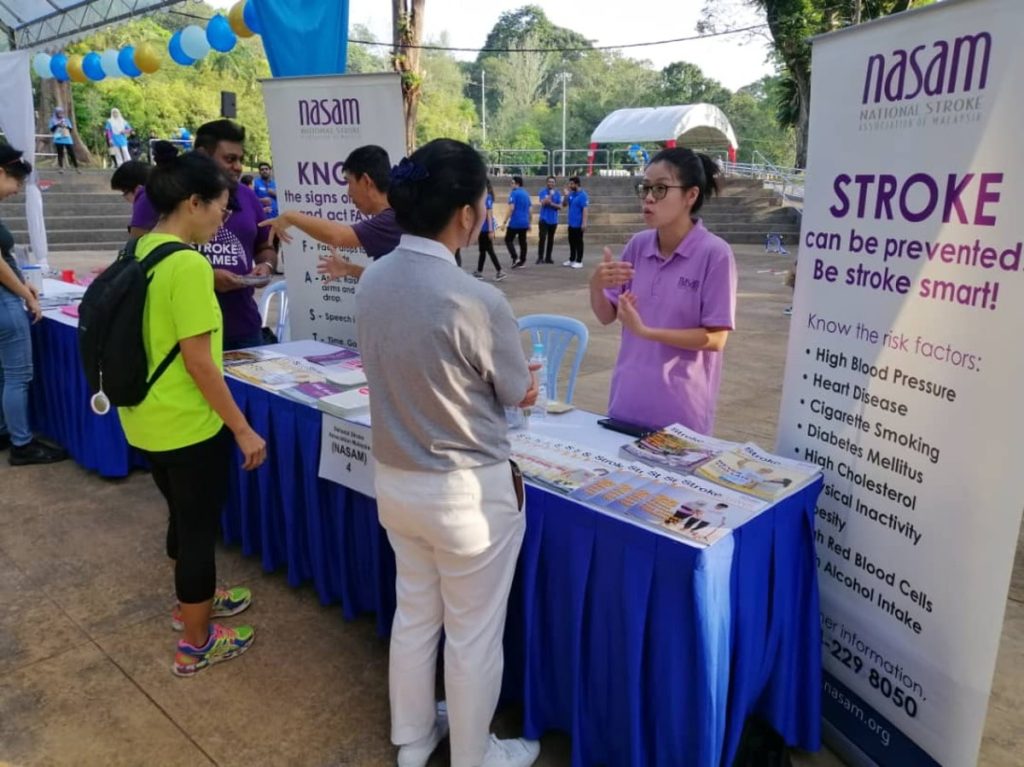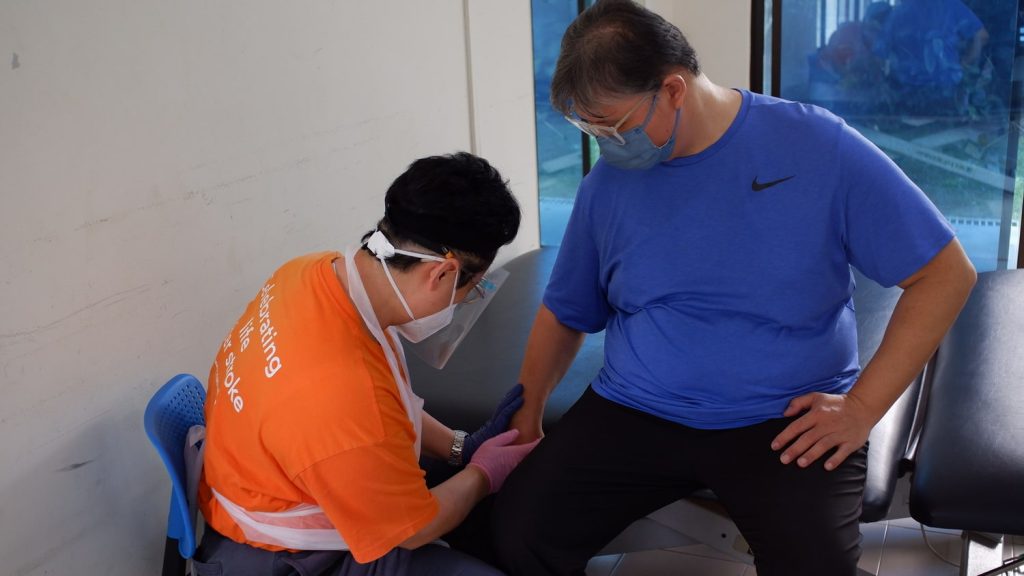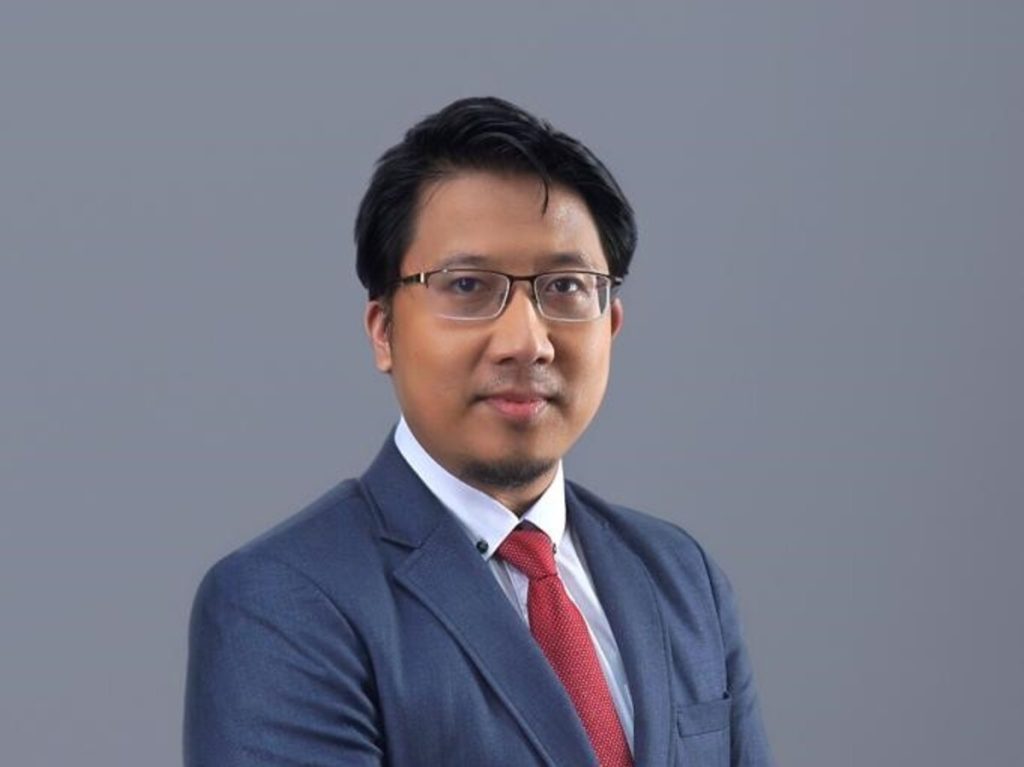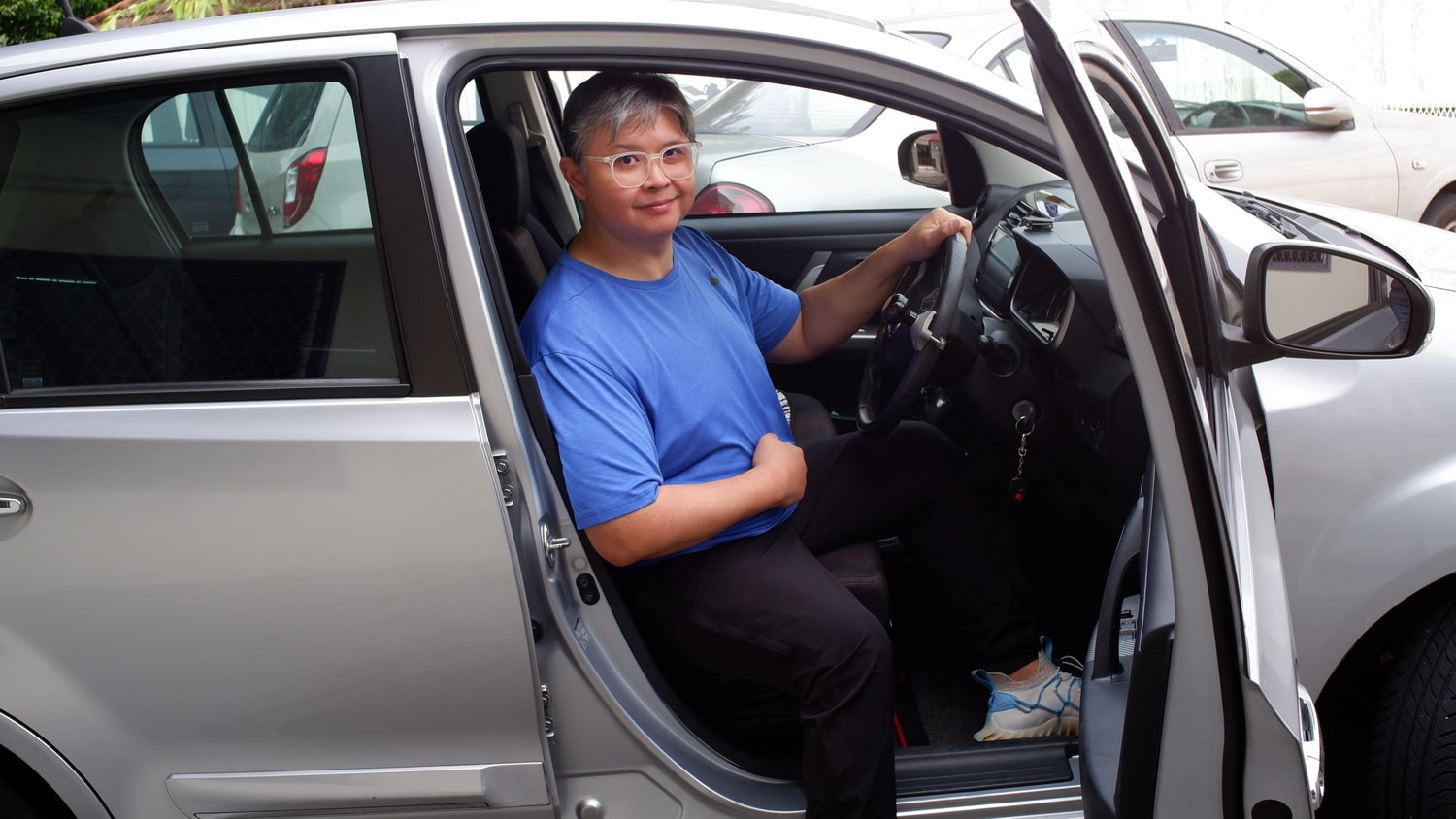KUALA LUMPUR, Sept 15 – Kelvin Khor, aged 43 then, woke up after an afternoon nap with an excruciating headache and lost consciousness before he could call for help.
When he awoke two whole weeks later in a hospital, he couldn’t move his right hand, arm, and leg, nor could he speak.
While Khor has recovered his functions and is now fully independent, other people who suffer a stroke may not be so lucky. According to the Galen Centre for Health and Social Policy’s White Paper on stroke, more than 14,000 strokes are estimated to occur annually in Malaysia, resulting in nearly 14,000 deaths.
Stroke occurs when there is a blocked artery, leading to reduced blood flow and oxygen supply to the brain (ischaemic stroke) or burst blood vessels (haemorrhagic stroke), both of which can often be life-threatening.
Common symptoms include hemiparesis (one-sided muscle weakness), vomiting, drowsiness, headaches, and loss of consciousness. These symptoms are often unrecognised as stroke.
Stroke is the leading cause of adult disability in Malaysia. Although the majority (60 per cent) of stroke patients are above the age of 60, according to the Galen Centre’s White Paper, “young stroke”, or stroke afflicting those aged between 19 and 50, comprised 16 per cent of hospitalised patients.
The main risk factors for stroke include hypertension, diabetes, high cholesterol, and obesity – these non-communicable diseases are common in the country, according to the National Health and Morbidity Survey (NHMS) 2019.
BEFAST: Recognise Symptoms, Golden Hour: Seek Treatment Within One Hour

Dr Wan Asyraf Wan Zaidi, a consultant neurologist and physician at Hospital Canselor Tuanku Muhriz UKM and Cardiac Vascular Sentral Kuala Lumpur (CVSKL), said the Malaysia Stroke Council, with the support of the World Stroke Organisation, launched in 2021 an acronym for stroke awareness – BEFAST in English and PeRMATA for Bahasa Malaysia.
The BEFAST acronym stands for: Balance difficulties, Eyesight changes, Face weakness, Arm weakness, Speech difficulties, and Time to call 999.
“Malaysia stroke neurologists preferred this acronym as it represents most of the early stroke symptoms,” Dr Wan Asyraf told CodeBlue in a recent interview.
Seeking immediate medical attention for stroke is paramount to increase chances of survival and to minimise long-term disability. Hence, the importance of the “golden hour” has always been emphasised by various medical professionals.
The “golden hour” refers to providing effective treatment within the first 60 minutes of an ischaemic stroke, according to the Galen Centre’s White Paper, to minimise disability and severe and permanent deficits.
Therapies like thrombolysis to break up blood clots should ideally be provided within 4.5 hours from the onset of stroke symptoms. However, these are limited in Malaysia’s health care system.
“The treatment requires a stroke team who are ready to provide a “specialised fast track service”, which requires adequate human resource from multi-disciplinary teams. The blood vessels of the brain can be opened by a ‘clot-busting’ agent via injectable medication, with or without catheter-delivered endovascular thrombectomy,” Dr Wan Asyraf explained.
“For the last 30 years, stroke specialists can assist selected patients with blockage types of strokes if they arrive at the hospital as soon as possible. However, it is important to note not every hospital in Malaysia is capable of providing such a service.”
Tracy Chan, a physiotherapist and head of rehab at the National Stroke Association of Malaysia (NASAM), explained that stroke is damage to the brain, either bleeding or clots. More of the brain will die the longer the brain has altered or impaired circulation.
“So, the faster you re-establish normal circulation, the less of the brain dies. Therefore, lesser chances of disabilities, and the patient is less likely to have other stroke-related issues. So, it’s very important to get in as quickly as possible,” Chan told CodeBlue in a recent interview.
“Symptoms vary depending on where the stroke occurs. The most common ones are seen in the BEFAST acronym. But there can be smaller ones where there is just a loss of speech or part of visual fields (and they walk into doors and walls).
“People with stroke symptoms should immediately get medical attention at the closest emergency department. If it is possible, they should go to designated stroke-ready hospitals in Malaysia, where the hospital has a pathway that gets the patient into stroke care immediately.”
The list of Stroke Ready Hospitals, a collaborative effort by the Malaysia Stroke Council Committee with Angels Initiative (Malaysia), can be accessed at the MyStroke Hospital website.
Life After Stroke: Rehab, Emotional Support, Being Part of a Community

Recovering from a stroke is a unique journey for every individual. It requires physical, emotional, and mental resilience. Rehabilitating the body and mind is a crucial step towards reclaiming independence and improving the quality of life, NASAM said.
“It depends on the level of disability. So, if you have a person who’s got severe disabilities, the stroke has damaged the places where you deal with consciousness, movement, cognition, speech, and swallowing. They may need long-term nursing care, just to make them comfortable.
“I’ve seen a few in Malaysia and we try to help them and their families out with awareness, emotional support and link them to services,” Chan told CodeBlue.
“At the same time, you also have patients who did not suffer severe damage to their brain functions. These are people who can function somewhat independently like walking, bathing etc.
“NASAM is a place for them to come in for rehabilitation, daily exercises and social interaction, just to keep them going, and to make sure they’re not isolated. A place for them to be part of a community again.”
Rehabilitation extends beyond the clinic or hospital setting. Stroke survivors often require ongoing support in their daily lives. This may involve making modifications to the home environment to ensure safety and accessibility, utilising assistive devices such as walkers or wheelchairs, and exploring adaptive technologies that can aid in communication or mobility. Apart from that, the support of their family members is also vital to make recovery.
“Not many people understand them. And it is usually the very close family members or the caregivers and relatives who will actually take the time and accommodate them. That is really the long-term care that can be quite difficult for many because it isn’t easy emotionally and financially,” Chan explained.
“That is what the NASAM tries to provide as best as we can. We try to provide stroke survivors a place where they can come for daily group exercise sessions, one-to-one physiotherapy sessions, OT (occupational therapy) sessions and speech sessions. We also try to support caregivers in their journey with the stroke survivors.”
The journey may be challenging, but with the right support system and determination, progress can be made.
Stroke Survivor Now Talks, Walks, Climbs Stairs, Drives, and Works

Kelvin Khor’s journey inspires hope and resilience. After Khor, now aged 48, was hospitalised in 2018 for a stroke, he immediately started stroke rehabilitation.
According to NASAM’s feature of Khor’s story in its March 2023 Strokenews newsletter, his three-month rehabilitation programme at Tung Shin Hospital proved fruitful when he was able to walk small steps and move his right leg.
Seven months later, in his second stroke recovery milestone, Khor was able to speak by responding with one or two words after speech therapy and physiotherapy at ReGen Rehab Hospital in Petaling Jaya, Selangor.
Khor then joined NASAM to continue his journey in stroke recovery; he has regained speech and motor functions: Khor regained his ability to talk, walk, move his previously paralysed right arm and hand, climb stairs, and drive.
The stroke survivor lives by himself, is fully independent, and has returned to his previous profession in media production, working as a freelance media producer since 2020, two years after stroke.
“Don’t ever give up. Don’t be afraid to stand up by yourself when you can. Be brave to try to do what you want and need to do,” Khor told NASAM.
Malaysia Must Improve NCD Management; Increase Acute Stroke Services; Boost Post-Stroke Care, Rehab and Support System

Dr Wan Asyraf emphasised that prevention is better than cure, projecting a rising trend in the prevalence of NCDs as Malaysia grows to be a developed country.
“The Malaysian government should improve on early access to NCDs management such as hypertension, diabetes, high cholesterol and atrial fibrillation health campaigns should be reinitiated to empower Malaysian communities in implementing preventive measures such as healthy diet, stopping smoking habits, regular exercise and maintaining ideal body weight,” the consultant neurologist told CodeBlue.
He also believes that while efforts such as stroke ready hospitals are effective, much still needs to be done by health care providers.
“Malaysian health care facilities should also be well prepared for these NCDs, specifically stroke if it occurs. A clear policy to ensure each hospital with the capacity to provide acute stroke service, post-stroke care prevention and rehabilitation, and a support system should be implemented.”
Dr Wan Asyraf also opines that adequate funding and human resources in improving the stroke care system in each health care facility is vital.
“All centres with specialists and support systems to provide acute stroke services should be ready to provide the services, inclusive of the clot-busting agent and thrombectomy assessment 24/7. A stroke care network should be inclusive of both the public and private sectors’ network,” he suggested.
“At the moment, we need more well-trained neurologists, interventional neurologists, interventional neurosurgeons, and interventional radiologists for acute stroke services. This requires funding to get more trained personnel in this field as stroke treatment evolves to be therapeutic, rather than purely supportive.
“In our country, we have less than 10 acute stroke units and the majority of the private sector utilises intensive care unit facilities, rather than stroke care units due to limited resources and expertise.”
The Galen Centre’s White Paper said that less than 1 per cent, or 0.65 per cent, of stroke patients in Malaysia were treated with thrombolysis, citing data from the National Stroke Registry between 2010 and 2014.
The health think tank stressed that ensuring the availability of stroke treatment, particularly during the critical first 4.5 hours, would save lives, improve outcomes, and reduce the overall cost of stroke.
“Stroke remains one of the greatest health challenges. However, Malaysia has within its means and the opportunity to transform people’s outcomes and experiences of stroke. With the right support, courage and determination, people can survive, recover, and heal.”
SC-MY-04506








